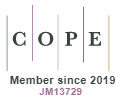Cinema, Architecture and Domesticity: The Filmic House in Basu Chatterjee’s ‘Piya ka Ghar’
DOI:
https://doi.org/10.15415/cs.2019.71006Keywords:
Filmic House, Lived Space, Domesticity, Chawls, Human BehaviourAbstract
This paper explores the intersection of cinema and architecture to analyse the Filmic House in Hindi film Piya Ka Ghar (Dir. Basu Chatterjee, 1972). It deploys Environment-Behaviour Studies for film interpretation to make readings about the unique habitability and domesticity of chawls, a residential typology evolved in Bombay for communal living in a dense urban situation. The central premise of the film is constructed around the spatial anxieties faced by a young bride having grown up in a spacious village house when she arrives at her new marital home, a single room chawl tenement that is home to five other people besides her husband, and is always overrun by chawl friends. This marital house (or ‘The Home of the Beloved’, of the title) and its extreme utilisation of space is the source of her anxieties and impacts her behaviour. The lived space rendered in the film and its architectural mise-en-scene is found to communicate about the strategies of adaptation and possible reconciliation to a life in chawl. It also communicates nuanced meanings about the generally understood notions of domesticity such as home as a private and inner domain vis-à-vis the world outside by showing their fluidity in the context of chawl living.
Search Keywords for This Page
Chawl architecture, Piya ka ghar full movie, Ghar architecture, Piya ka ghar 1972 full movie, Movie ghar, Piya ka ghar full movie hd, Piya ka ghar, Piya ka ghar 1972
Downloads
References
Adarkar, N. (Ed.). (2011). The Chawls of Mumbai: Galleries of Life. Delhi: ImprintOne.
Altman, I. (1977). Privacy regulation: culturally universal or culturally specific? Journal of Social Issues, 33(3), 66–84. Retrieved October 12, 2016, from http://courses.cs.vt.edu/cs6204/Privacy-Security/Papers/Privacy/Privacy-Regulation.pdf
Banerjee, S. (2010). Debates on Domesticity and the Position of Women in Late Colonial India. History Compass, 8(6), 455–473, June 2010.
Baron, R. A., Byrne, D., and Kantowitz, B. H. (1980). Psychology: understanding Behaviour. Holt Reinhart and Winston.
Bruno, G. (2002). Atlas of Emotions: Journeys in Art, Architecture and Film. New York: Verso.
Chatterjee, P. (1994). The Nation and its Women in P. Chatterjee, The Nation and its Fragments: Colonial and Postcolonial Histories. (116–134), Delhi: Oxford University Press.
Deasy, C. M. (1985). Designing Places for People. Whitney Library of Design.
Dudley, M. (2010). Cinema and the ‘City of the Mind’: Using Motion Pictures to Explore Human- Environment Transactions in Planning Education, in L. Sandercock& G. Attili (Eds.), Multimedia Explorations in Urban Policy and Planning: Beyond the Flatlands (265–286), New York: Springer.
Freedman, J. L. (1975). Crowding and Behaviour. New York: The Viking Press.
Gangar, A. (2011). Chalchitra/Chawlchitra: The Representation of Mumbai’s Chawls in Hindi Films. In N. Adarkar (Ed.), The Chawls of Mumbai: Galleries of Life 89–100. New Delhi: imprintOne.
Gifford, Robert. (2007). Environmental Psychology, Principles and Practice. Optimal Books.
Giroux, Henry A. (2011). Breaking into the Movies: Public Pedagogy and the Politics of Film. Policy Futures in Education, 9(6), 686–695.Retrieved October 15, 2018, from https://www.academia.edu/6546168/Breakinginto_the_Movies_public_pedagogy_and_the_politics_of_film
Hall, E. T. (1966). The Hidden Dimension. Anchor Books.
Hall, Stuart. (1997). Representation: Cultural Representations and Signifying Practices. New Delhi: Sage Publications.
Holahan, C. J. (1982). Environmental Psychology. New York: Random House.
Koppikar, S. (2011). Inner Spaces, Women’s Voices. In N. Adarkar (Ed.), The Chawls of Mumbai: Galleries of Life 119–128. Delhi: ImprintOne.
Lefas, P. (2009). Dwelling and Architecture: from Heidegger to Koolhaas. Berlin: Jovis Verlag GmbH.
Lefebvre, H. (1974). The Production of Space (extract). In N. Leach (Ed.), Rethinking Architecture: A Reader in Cultural Theory (1997, 139–147). London: Routledge.
Marshall, N. (1970). Personality correlates of orientations toward privacy. In Archea, J., and Eastman, C. (eds.), EDRA Two: Proceedings of the 2nd Annual Environmental Design Research Association Conference 316–319. Carnegie-Mellon University, Pittsburgh.
Downloads
Published
Issue
Section
License
Articles in the Journal of Creative Space (Creat. Sp.) by Chitkara University Publications are Open Access articles that are published with licensed under a Creative Commons Attribution- CC-BY 4.0 International License. Based on a work at https://cs.chitkara.edu.in. This license permits one to use, remix, tweak and reproduction in any medium, even commercially provided one give credit for the original creation.
View Legal Code of the above-mentioned license, https://creativecommons.org/licenses/by/4.0/legalcode
View Licence Deed here https://creativecommons.org/licenses/by/4.0/
 |
Journal of Creative Space by Chitkara University Publications is licensed under a Creative Commons Attribution 4.0 International License. Based on a work at https://cs.chitkara.edu.in/ |







